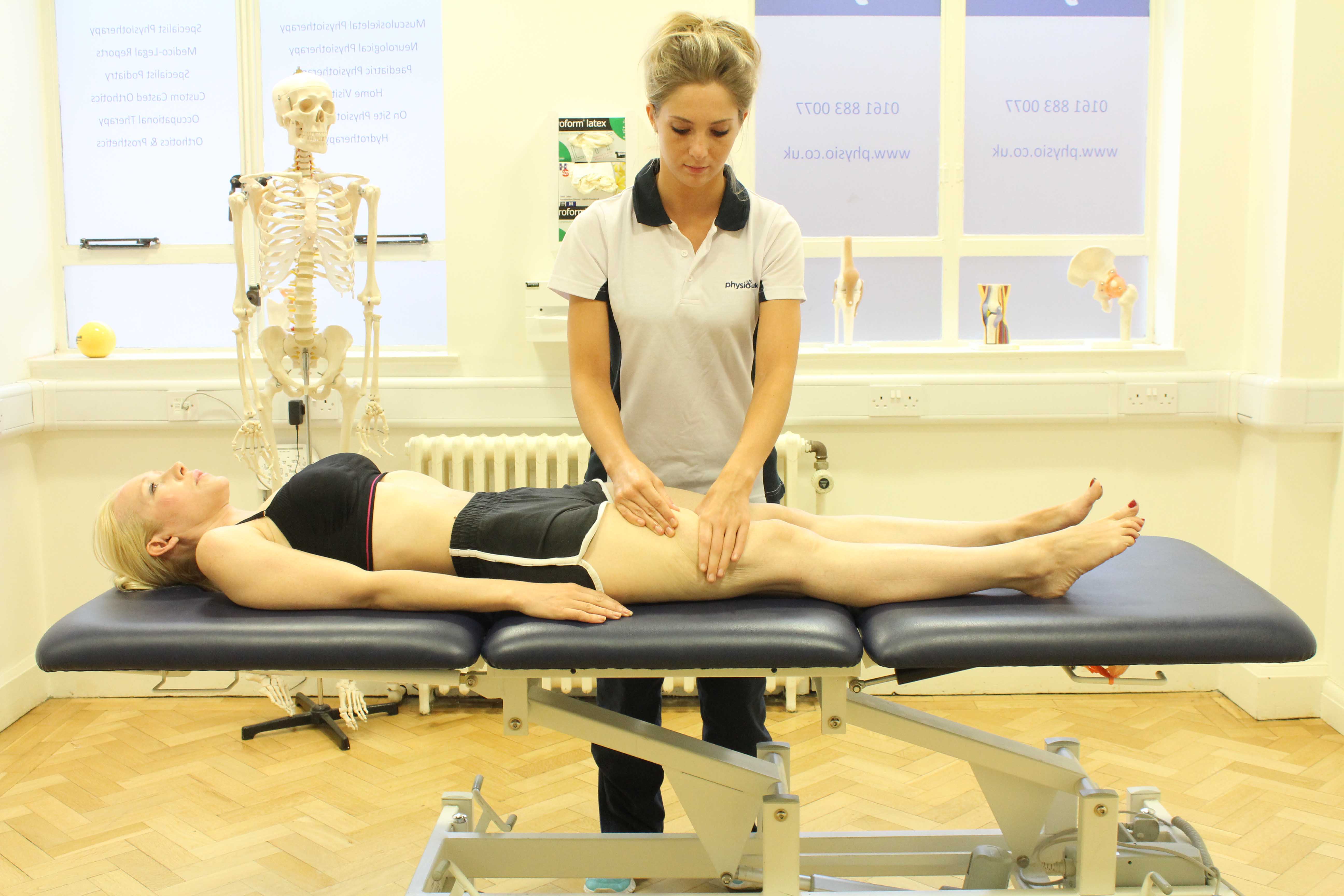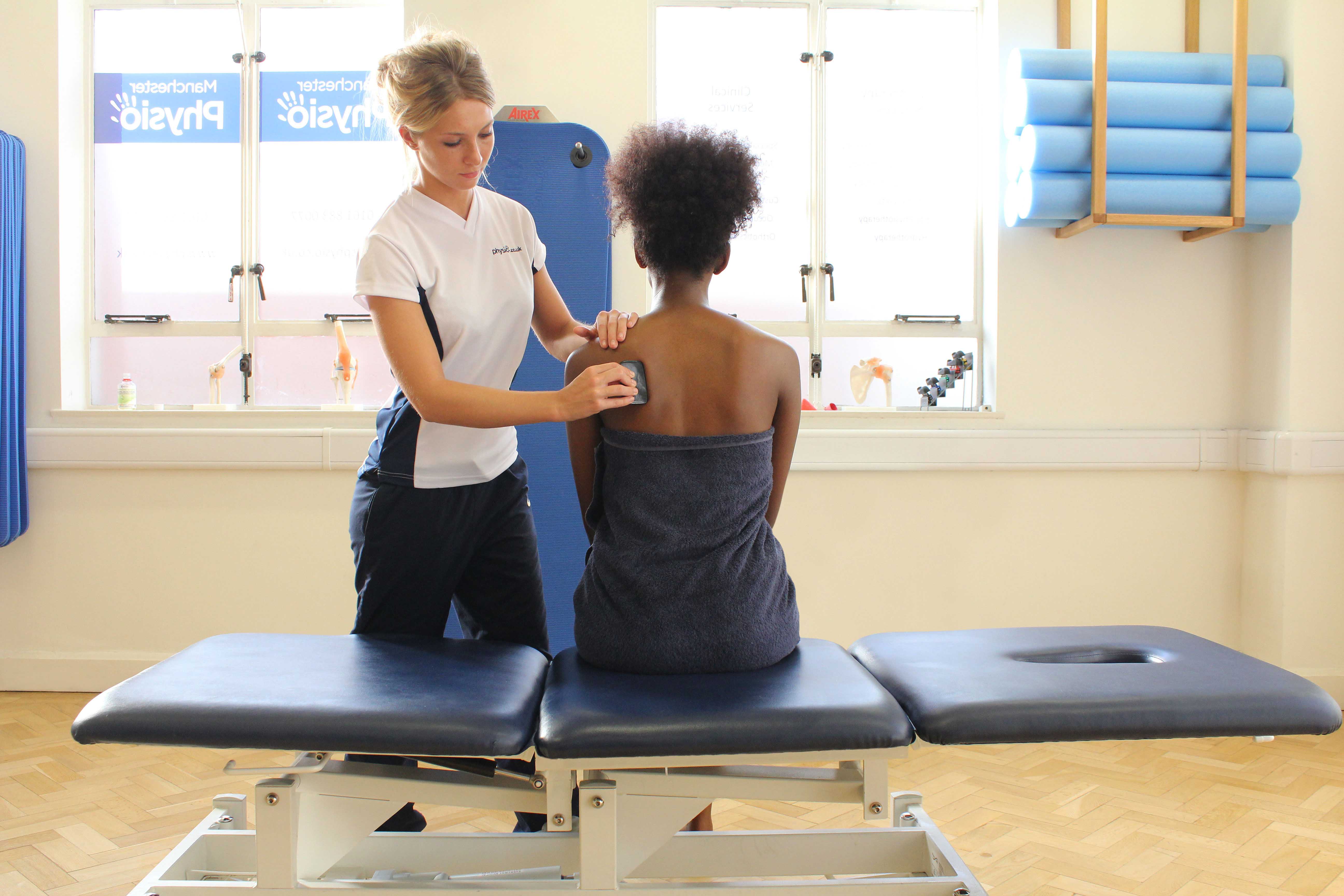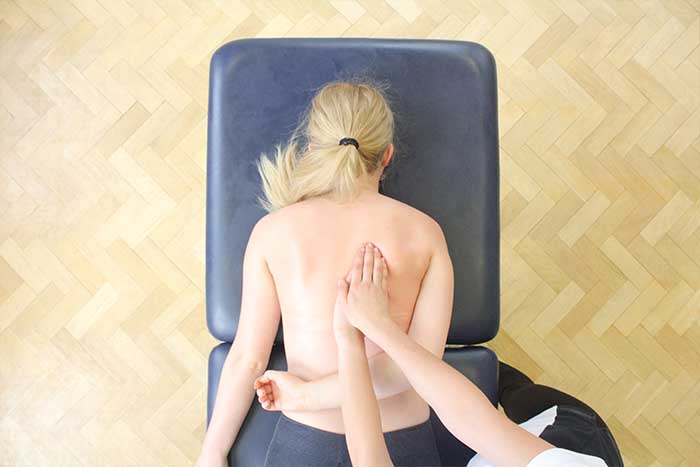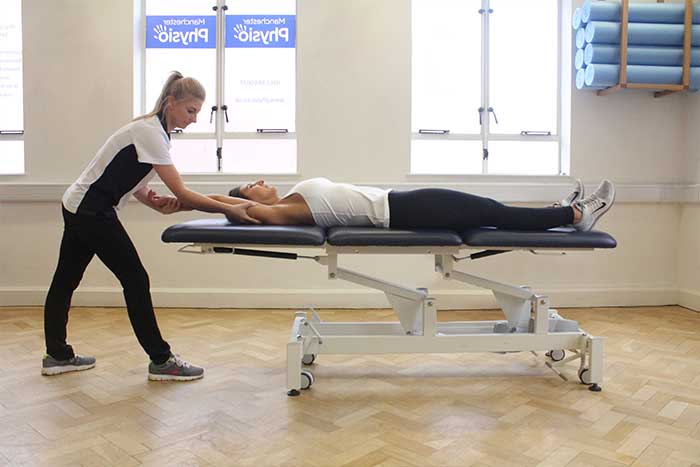A common benefit of massage is increased temperature. Increased temperature is the process of increasing circulation around a person's body to enable muscular and connective tissues to increase in temperature. Increasing temperature allows the range of movement to increase as restriction is reduced. A massage therapist will use a variety of techniques to increase temperature to help treat a range of conditions. Our massage therapists at Physio.co.uk increase temperature through massage to help relieve muscle tightness and decrease tension.
What is increased temperature?
Increased temperature is where superficial and deep tissues are increased in temperature to help relax and loosen a muscle. As well as muscular tissues, the temperature of fascia can also be increased. Fascia is a thick, fibrous layer of connective tissues located beneath the skin surface that can often become restrictive. Temperature is increased when circulation is improved around the body due to friction created between hands and skin. An increase in temperature allows muscular tissues to increase in elasticity and flexibility. A massage encourages an increase in circulation. Massage helps to increase heart rate to allow an improvement in circulation. Improving blood flow around the body not only increases muscle temperature but also provides the muscle with an increase in healthy oxygen and nutrients. Many different techniques can be used to increase temperature during a massage aiming to reduce joint stiffness and increase relaxation.
 Above: Increased temperature can promote healing.
Above: Increased temperature can promote healing.What are the benefits of increased temperature?
There are many benefits of increased temperature. The most common benefits include:
 Above: Use of a therapy aid for a stripping massage technique by a specialist massage therapist
Above: Use of a therapy aid for a stripping massage technique by a specialist massage therapistIncreased temperature can help decrease tension. Tension is where muscles stay contracted and do not relax. Tension can result in an increase in pain and can also create muscular knots. During a massage, circulation of blood is increased. An increase in blood circulation rises muscle temperature. A rise in muscle temperature increases elasticity of muscular tissues around areas of tension. An increase in elasticity allows a muscle to relax, decreasing tension. Decreasing tension also helps to decrease pain.
A common benefit of increased temperature is increased range of movement. When muscles increase in tightness, movement can be restricted and pain can be increased. An increase in muscle temperature occurs as an improvement in blood flow is encouraged. An increase in muscle temperature, improves muscle elasticity and flexibility, decreasing muscle tightness. A decrease in muscle tightness reduces restriction and increases range of movement.
A person's posture can be improved when temperature is increased. Muscular tension and tightness can cause an increase in pain, preventing a person from having a correct posture. A massage aims to improve a person's posture by decreasing pain and restriction caused by tension and tightness. Friction is created between the skin and fingers, resulting in an increase in circulation. An increase in circulation around the muscles encourages a rise in muscle temperature. A rise in muscle temperature allows muscles to relax as tissue inelasticity is reduced. A decrease in elasticity reduces muscle tension and tightness and allows a person to return to their normal, correct posture.

What techniques are used to increase temperature?
Various techniques can be used to increase temperature. Techniques used to increase temperature include:
Frictions are often used to increase temperature. Frictions involve applying pressure transversely along muscle fibres using the fingertips or thumbs. Frictions can be used to help break down collagen fibres that can build up within muscles and cause restriction. Frictions help to increase the temperature of a muscle to allow the breakdown of collagen fibres to occur. Increasing temperature by using frictions helps to increase flexibility of a muscle and reduce restriction.
Temperature can be increased using skin rolling. Skin rolling is where fingers and thumbs are used to pick up and roll skin. Skin rolling helps to separate fascia from muscle. Fascia is a tough, fibrous layer of connective tissues located beneath the skin. Separating fascia from muscle aids in decreasing muscle tightness, tension and restriction. Skin rolling increases muscle temperature as it increases blood flow to the area. Increasing temperature through skin rolling allows fascia and muscles to loosen and stretch.
Myofascial release can increase temperature. Myofascial release involves slowly applying pressure to the treatment area using flattened hands and fingers. The slow, soft pressure used helps to increase temperature of fascia. Myofascial release can be used to decrease tightness and pain. As temperature continues to increase, the pressure applied increases, enabling the flattened hands and fingers to get deeper within the fascia. As the hands and fingers get deeper within the fascia, they slowly move around the treatment area in no specific direction. As the hands and fingers move around, fascia spreads out. Spreading out fascia helps to decrease tightness and therefore pain.

What situation would increased temperature help?
Many different conditions can be treated when temperature is increased. The most common situations in which increased temperature can help include:
Increased temperature can help post event. After a person has taken part in an event, muscles tend to be tight and a build-up of metabolic wastes can occur. A build-up of metabolic wastes can cause muscular fatigue and weakness. Delayed onset muscle soreness is also a common effect activity can have on a person. Delayed onset muscle soreness is caused by microscopic tears in muscle fibres that have occurred as a result of injury or overuse during activity. Increasing muscle temperature reduces muscle tightness as inelasticity of muscular tissues is reduced. An increase in temperature also encourages an increase in blood and lymph flow. An increase in blood flow provides muscles with an increase in oxygen and nutrients used for the repair of damaged muscular tissues. An increase in lymph flow helps to remove metabolic wastes more efficiently, reducing muscular fatigue and weakness.
Stress can often be reduced when temperature is increased. There are many reasons stress can occur. A common cause of stress is muscle tightness and pain. Muscle tightness can cause restriction resulting in an increase in pain. An increase in pain can reduce normal day to day activity levels increasing stress. Increasing muscle temperature through massage helps to increase muscular flexibility and range of movement. An increase in flexibility and range of movement results in a decrease in muscle tightness. A decrease in muscle tightness reduces pain and so activity levels can return to normal. A decrease in pain, and normal activity levels reduce stress.
Increased temperature can help reduce muscle tightness. Muscle tightness is very common in many people. There are also many reasons muscles become tight, the most common being injury. After an injury occurs, the body's natural healing process forms collagen fibres to help repair damaged tissues. Collagen fibres can create muscular knots that decrease movement and increase pain. A decrease in movement results in an increase in muscle tightness. Muscle tightness can increase restriction resulting in pain. During a massage, friction created between the skin and fingers increases blood flow around the body as heart rate is increased. An increase in blood flow raises muscle temperature. An increase in muscle temperature loosens collagen fibres and reduces muscular inelasticity. Loosened collagen fibres reduce muscular knots and pain to help increase range of movement and decrease tightness. A reduction of inelasticity within muscular tissues improves flexibility and further increases range of movement. An increase in flexibility and range of movement decrease tightness.
Summary
Increased temperature is where muscular and connective tissues are increased in temperature. There are a range of benefits gained when temperature is increased including decreased tension, increased range of movement and improved posture. A variety of techniques can be used to increase temperature including frictions, skin rolling and myofascial release. Increased temperature can help treat a person in many ways including post event, stress and muscle tightness. Our massage therapists at Physio.co.uk increase temperature through massage to increase relaxation and decrease pain.
How can I arrange a massage to increase temperature?
The easiest way to arrange a sports massage to increase temperature at Physio.co.uk is to email us at office@physio.co.uk or call us on 0800 033 7800.
Alternatively if you have any questions plesae feel free to contact us.
We offer a 7 day service and provide home and clinic appointments.

 0330 088 7800
0330 088 7800


































